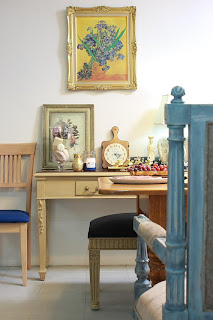Some years back, I used to work closely with this client who's obsessed with natural lighting. She would encourage (require) me not to bring any lights on assignments except for the camera and a reflector. And, to achieve that natural lighting look, our shoot skeds would only be during the golden hours.
Those days were fun, and frankly, I've learned quite a lot of natural lighting techniques....but at the same time, it was nerve wracking. You never know if the situation (lighting condition) will work. And as a freelancer, I am only as good as my last shoot. My next assignment would depend on how my last shoot turns out.
So to put my mind at peace, I've always managed to sneak in at least a single light in my gear bag....just in case.
For this assignment, I needed to shoot a portrait of the owner of a coffee shop. Bearing in mind that the look of the shot has to be naturally lit, I placed our coffee lover beside a window. This will be my key light. The first challenge I faced was that the light coming in was too harsh...quick fix? I simply pulled down the blinds to diffuse that harsh sunlight and the white table worked in my favor too since it provided fill.
As far as lighting our subject was concerned, I was good to go! But you already know that that is just half the story.
Because of the strong light coming in through the window (even with the blinds down), my exposure setting for our subject caused too much contrast that the background was 2 or 2 1/2 stops underexposed.
The obvious solution that I went with was to light it with strobe, still bearing in mind though that I had to somehow make it appear naturally lit.
To achieve this, I lit the background bare bulb, and pointed my strobe towards the ceiling. I placed the light behind our subject, camera right just outside the frame and set the power of my strobe to match the intensity of my (natural) key light. Because I was spreading light by bouncing if off the walls and ceiling, I was able to soften up the light. Also, it caught the color of the wall which gave a warm colot temp as a result. I repositioned the light some more so it will evenly light the background and let some light spill onto my subject's left shoulder and face.
Though my client figured that I mixed natural and artificial light for this, she gave this a nod and made its way to print.
Hope this helps. Happy shooting!








